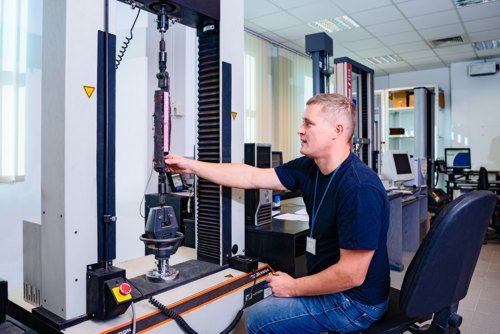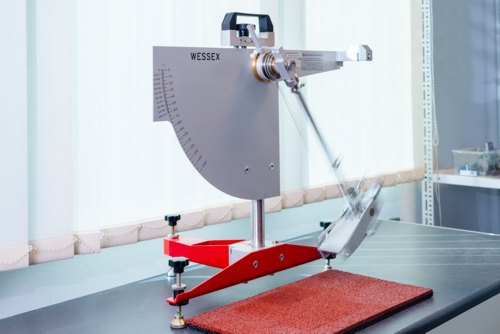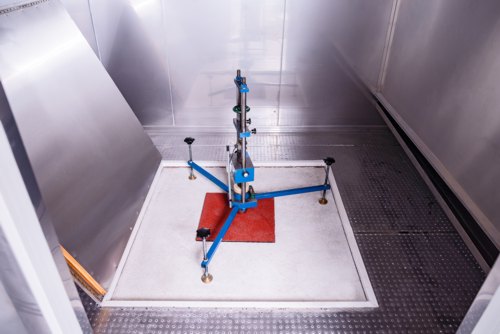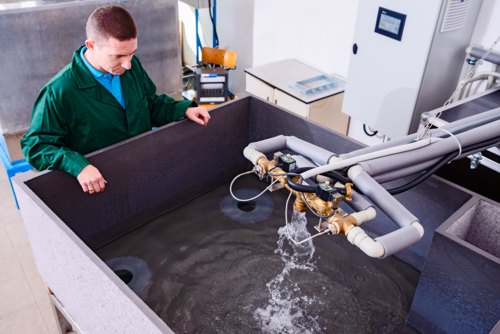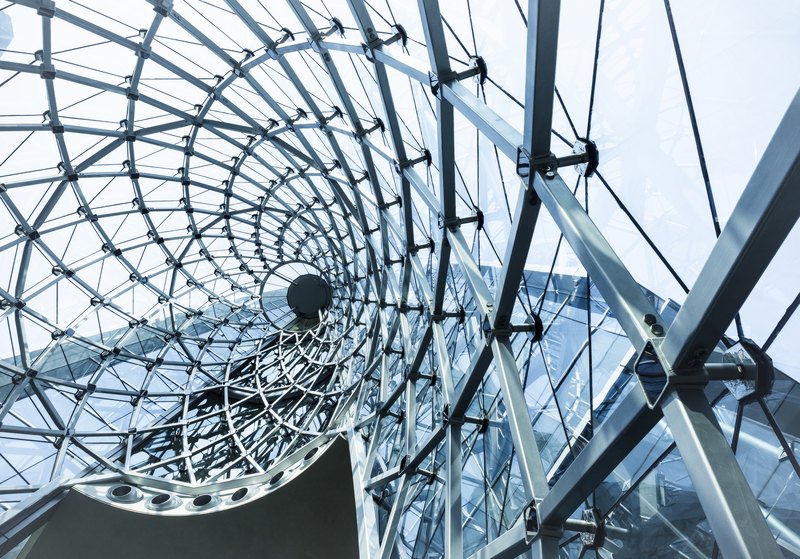
Building Materials Laboratory
Finishing materials and products
- plasters (external and internal), plastering mixes and mortars
- paint and varnish coatings and products
- adhesives (cement-based, dispersive, based on reactive resins, solvent-based, hybrid and polyurethane-based), bonding mixes and mortars
- systems of thermal insulation of walls and related products
- ceramic tiles
- gypsum panels and drywalls
- stretch ceilings
- cladding materials made of plastic, on mineral binders
- floors and floorings
- floor screeds and levelling mixes
- floor coverings
- wood and wood-based materials
- plastic products and rubbers (window profiles, window sills, gutter systems etc.)
- components for sealants for joints between window and wall (polyurethane foams and tapes)
- composite materials, e.g. plastics and wood chips, recycled
Sports and leisure surfaces and floors
Waterproofing products
- reinforced elastic asphalt-based products (tar paper, bitumen shingle)
- elastic products made of plastic and rubber (foils, textiles, tapes, laminates, gaskets)
- asphalt-based waterproofing coatings and mixtures
- waterproofing coatings and products based on plastics and cement
- waterproofing stopping and injection products
- ceramic and cement roof tiles
- sealants
- geosynthetic barriers and geotextiles
- roof accessories
Biological corrosion protection products
- wood and wood-based material protection products
- mould and algae control and prevention agents
Concentration of mould spores in the air
The identified characteristics include:
- identification features, dimensions, and physical and chemical characteristics
- mechanical performances, such as:
- tensile strength (within a temperature range of −30°C to +250°C)
- compressive and bending strength
- cleavage and shear strength
- tear strength
- adhesion to substrate
- functional performances and specific features for particular applications, including:
- water tightness, absorbability
- permeability to water vapour and carbon dioxide
- thermal resistance, dimensional stability, shrinkage, flexibility
- impact strength and resistance to static and dynamic load
- fatigue strength
- creeping
- resistance to hail and wind load
- impedance parameters of coatings
- injective sealing capacity
- effect of admixtures on protective characteristics of mortars and concrete against reinforcement
- susceptibility of reinforcement steel in concrete to corrosion
- susceptibility of concrete and mortars to carbonation
- content of chloride and sulphate ions in construction products
- anti-slip properties and slipping resistance
- abrasion strength (including impact abrasion)
- resistance to shoe spikes
- ball friction, rolling and bouncing, resistance of sports surfaces in rotational movement
- wastewater treatment efficiency of onsite wastewater treatment stations
- effectiveness of mould and algae control, and prevention agents
- effectiveness of wood and wood-based materials protection agents
- effectiveness of wood protection from blue stain mould
- durability of products and systems, including:
- frost resistance
- resistance to atmospheric factors, including UV (X, Y, Z1 and Z2 environment, xenon and fluorescent lamps), water and variable temperatures
- resistance to aggressive environments (XA1, XA2 and XA3)
- resistance to asphalt, oil, synthetic eluate, water, alkalis and other liquid chemicals
- resistance to salt mist and SO2-containing atmosphere
- corrosion resistance and durability of coating on metal products
- resistance to mould and algae
Contact
Head of Laboratory
PhD Ewa Sudoł
Phone:
+48 22 57 96 492
+48 22 57 96 238
+48 22 56 64 409
E-mail:
materialy@itb.pl
Address:
ul. Filtrowa 1
00-611 Warszawa
ul. Ksawerów 21
02-656 Warszawa
